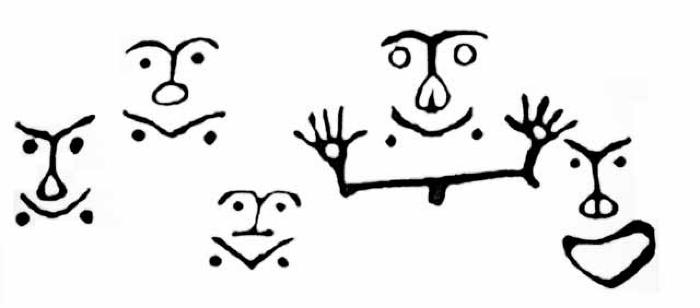Hand — Aigaq

Traditional Alutiiq artwork rarely depicts human hands. Most dolls were fashioned without arms, and hand carvings were not commonly attached to masks, as they were in some areas of Alaska. However, when hands are depicted in Alutiiq art, they are often pierced, shown with a hole in the center.
For example, a scraping tool from a prehistoric village in Karluk shows a hand, or perhaps a seal flipper, with a hole in its palm. Look closely at the central figure in the Alutiiq Museum’s petroglyph logo: it depicts a person holding up his or her hands. In the center of each hand is an open circle.
What do these circular holes mean? Among the Yup’ik people, the western neighbors and close relatives of the Alutiiq people, pierced hand motifs symbolize a willingness of spirits to allow animals to slip through their hands and ensure an abundance of game on earth. Holes and circles represent a passageway between the multiple layers of the universe.
Some circles suggest passage into the spirit world. The circular designs decorating prehistoric harpoons likely reflect the release of an animal’s spirit that occurs at its death. If properly treated, this spirit will return to the spirit world to await reincarnation. Other circles suggest movement out of the spirit world. Traditional masks, used to invite spirits to festivals, were often surrounded by one or more circular hoops.
